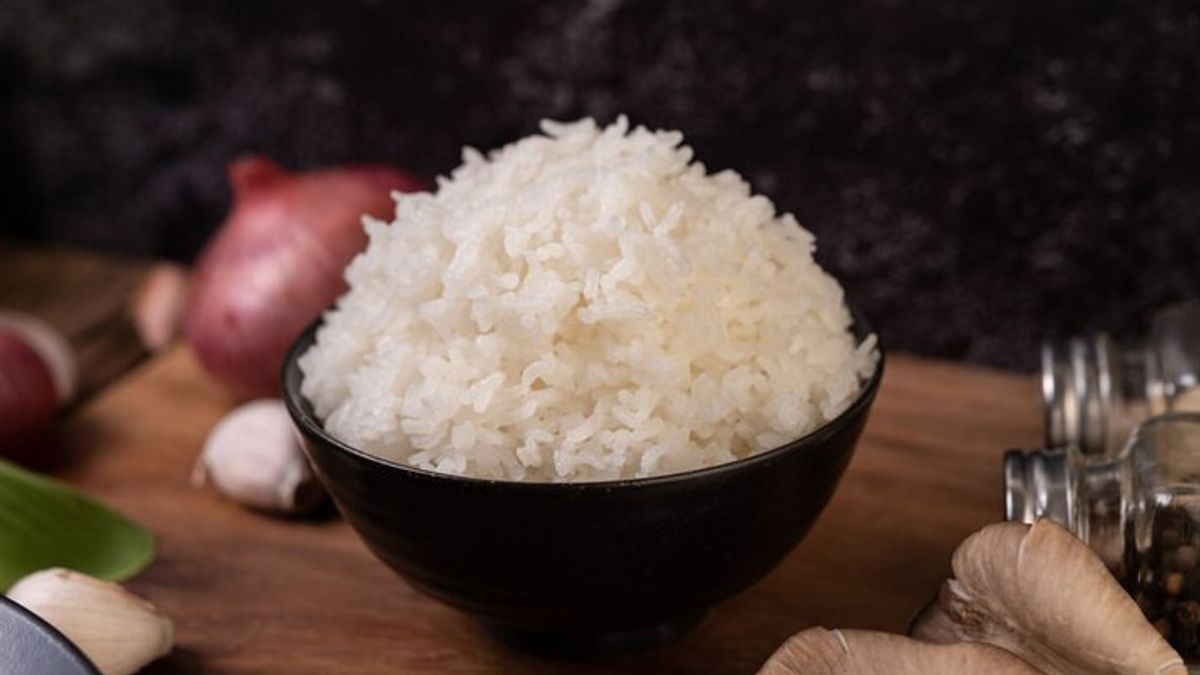JAKARTA - Nasi is a staple food that is almost always on the dining table of the Indonesian people. However, have you ever felt that the rice served at the restaurant has a much better taste and texture than cooked rice at home?
Restaurant rice is often more flexible, soft, and has a tantalizing aroma. Here are 10 secrets why rice in restaurants is always superior and you can imitate it at home, as reported by VOI from the Mashed page on Friday, January 3, 2025.
1. Using a Big Rice Cooker
Restaurants usually use commercial rice cookers designed to cook large amounts of rice with consistent results. This tool not only ensures perfect cooked rice, but is also able to keep rice warm without changing texture and taste. Even though the household rice cooker is not as big as the commercial version, you can still get good results by using quality rice cooker.
2. High Quality Rice
Types and quality of rice greatly affect the final results. Restaurants often choose premium rice such as old basmati, high-quality Jasmine, or local type. Premium rice usually has a more fragrant aroma, a better texture, and more flexible results. At home, you can try buying rice from a trusted brand or looking for rice with certification of origin in traditional markets or special stores.
3. Adding "Termega" or "Oil"
Another secret from restaurant rice that is more delicious is the addition of butter or oil to the cooking process. This fat not only adds flavor but also helps separate rice grains, so that rice becomes more flexible and does not stick. However, this trick is not suitable for all types of rice, such asvillary rice which requires a sticky texture.
4. Adding Nipis Cuka Or Jeruk To Cook Water
Some restaurants add a little vinegar or lime juice into the cooking water of rice. The acid from this ingredient helps remove the excess of starch in the rice, resulting in a better texture. You don't have to worry about the acid taste will be felt because the amount used is very small.
5. Right Cooking Technique For Each Type Of Rice
Each type of rice has a different way of cooking. Professional chefs understand that basmati rice requires less water than red rice, and glutinous rice requires an immersion before cooking. By understanding the specific needs of each type of rice, the results obtained are even more perfect.
6. Using Aromatic Seasoning
Restaurants often add aromatic ingredients such as pandan leaves, ginger, garlic, or spices into the rice when cooked. These ingredients give a tantalizing aroma and increase the taste of the rice. You can try adding aromatics according to the dishes to be served.
7. Mengcis Nasi
After cooked rice, the restaurant often lets it close in a pot for a few minutes. This technique ensures that the cooked rice is evenly distributed, the texture is flexible, and the aroma is getting out. Avoid opening the pot cap too quickly to maintain the quality of the rice.
8. Toasting Or Selling Rice Before Cooking
Some restaurants use the technique of roasting rice with a little oil or butter before cooking. This technique helps enrich the taste of rice and gives a more complex flavor. You can try this trick at home for more delicious rice.
9. Not using Instant Rice
Professional chefs almost never use instant rice because the texture and taste are not as good as rice cooked from the start. Instant rice often feels dry or less soft. For the best results, choose raw rice and cook it yourself at home.
BACA JUGA:
10. Understand When To Wash Rice
Washing rice is an important step towards eliminating excess starch, but there are some exceptions. For dishes like risotto or rice porridge, washing rice can reduce the desired creamy texture. On the other hand, for ordinary white rice or fried rice, washing rice is a mandatory step so that the results are not sticky.
The English, Chinese, Japanese, Arabic, and French versions are automatically generated by the AI. So there may still be inaccuracies in translating, please always see Indonesian as our main language. (system supported by DigitalSiber.id)

















